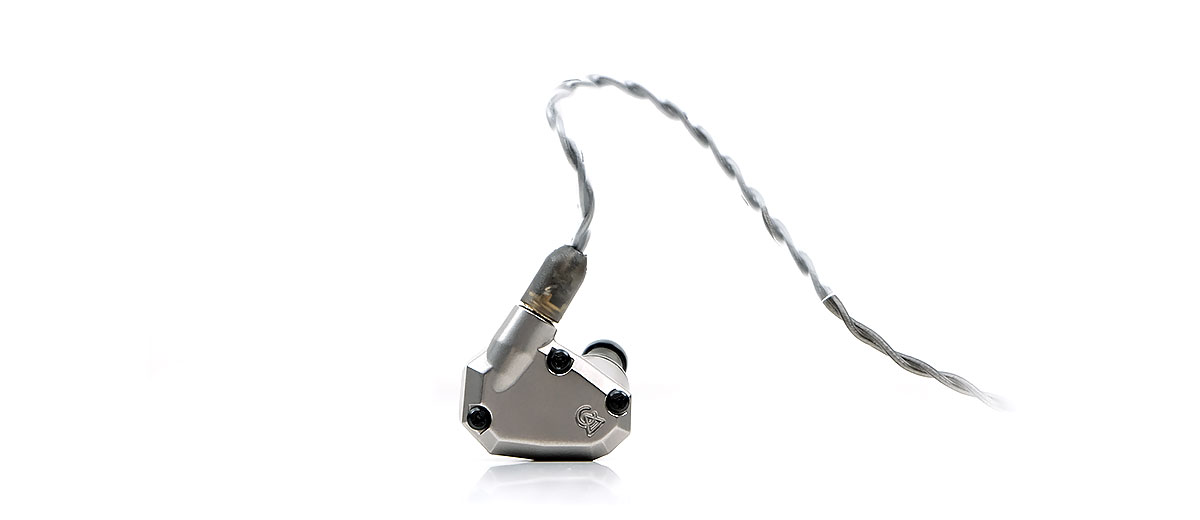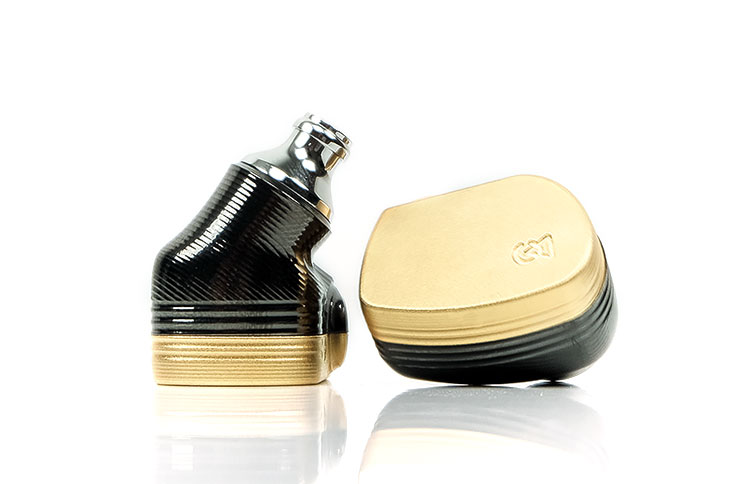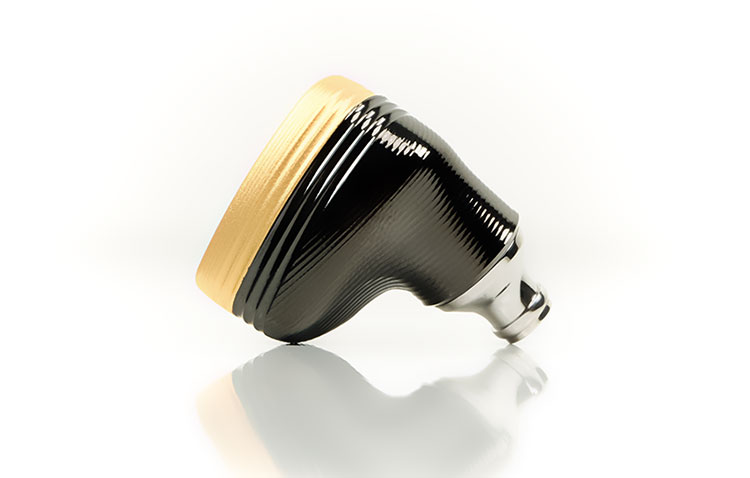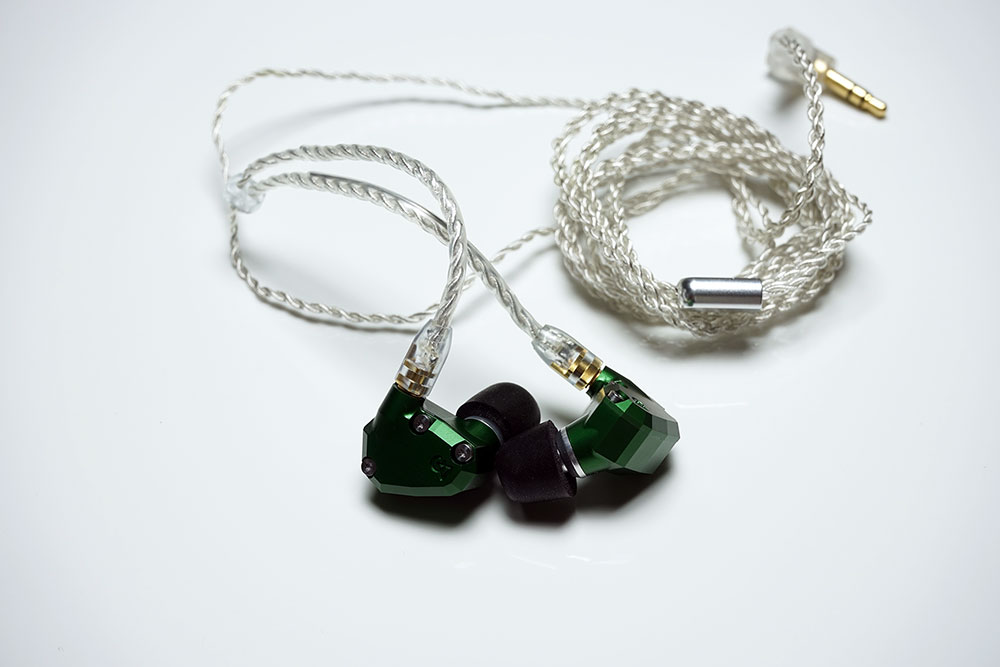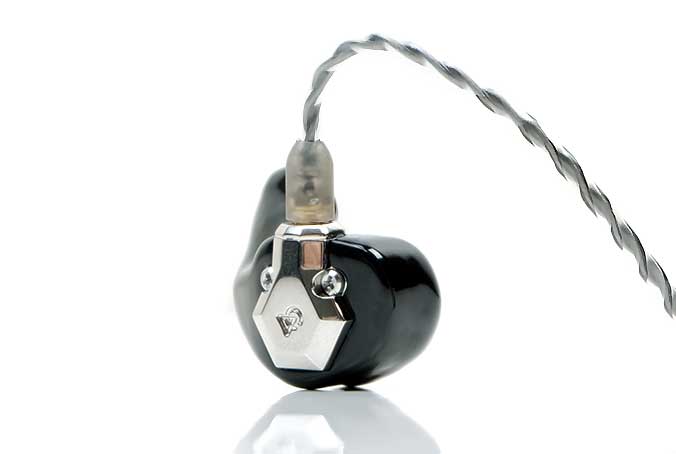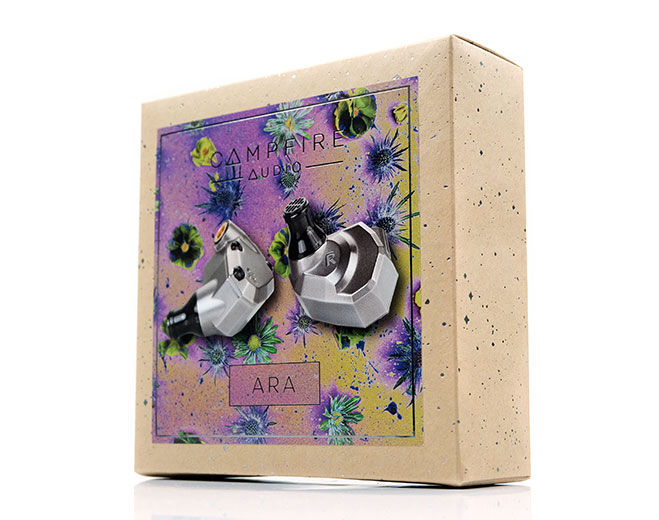Select Comparisons
Campfire Audio Solaris
$1499
Technical
The Solaris was launched at the back end of 2018 as their flagship and technically it still is though the 2020 version which we are cooking in right now is set to replace it. I still have a lot of love for the original though I do understand the size concerns some had. The smaller 2020 version should address that.
This is Campfire Audio’s top dog for hybrid designs and incorporates a lot of their tried and tested technology that is also in the Ara namely T.A.E.C. for the tubeless highs.
The configuration though is quite different with a single 10mm A.D.L.C. dynamic driver for the lows, a rear-ported midrange BA driver, and dual custom BA drivers with T.A.E.C. for the top-end.
The Ara is all BA with 4 for the lows, 1 for the mids, and 2 for the highs. That new midrange driver from the Solaris SE is also Ara’s midrange driver and it’s one I prefer over the original Solaris variant.
The Solaris also has a 4k crossover that the Ara does not use. Instead, the Ara uses a mix of acoustical dampers combined with the Solid Body acoustics space design inside the 3D shell for phase control.
Design
The designs of these are massively different with pros and cons. The Ara is smaller, lighter, and more subtle in its aesthetic. The Solaris is big and bold with beautiful 24k gold faceplates. The Ara is probably the more comfortable of the two, especially if you have small ear canals.
I still prefer the SuperLitz cable of the Solaris over the Smokey Litz cable of the Ara. Both are built to a very good standard but the additional wire count of the SuperLitz adds a little more dynamic range than the regular Litz.
Performance
Both of these monitors are ridiculously easy to drive, but the Solaris is slightly more so. You will not need much more than a resolving DAP for them to sound optimal so it is just a question of noise and sound preference.
It is a bit hard to compare the old specs with the new Vrms data for the Ara, however, the new Solaris 2020 is rated easier to drive than the Ara and the original Solaris follows that same path.
It is marginally more sensitive to higher noise floors than the Ara and outside of the Empire Ears Zeus one of the most efficient monitors I have tested.
Tuning
In terms of tuning, these are two very different presentations and quite easy to tell apart. One is explosive, fun, and hard-hitting. The other is high-fidelity with an exquisite midrange and attention to detail.
The Solaris has that unmistakable dynamic timbre on the low end with good quantity and plenty of power. Whereas the Ara is much more linear or neutral and yes, has a BA timbre to its low end.
The Ara lacks the Solaris ‘oomph’ with less depth and consequently less PRaT but it does extend quite well with top-notch detail and definition.
The Ara does have a little bump on the mid-bass around 100-200Hz for some timbral warmth but also less of a dip into the lower-mids compared to the Solaris.
And I do find the transition into the mids on the Ara to be just that bit smoother. The Solaris needs a faster cut due to the higher sub-bass elevation to prevent bass bleed as well as a more energetic treble to balance it out.
New Mids Driver
The mids have a pleasant bump from 1-2k but the aggression of the low-end and to a lesser extent, the top-end on the Solaris leaves the mids a little less coherent compared to the Ara. Lower-mid vocals are a bit behind the Solaris’ elevated bass and female vocals are more to the fore though a little harder-edged.
The Ara mids driver is so good and very reminiscent of the Solaris SE mids tone. It is a little richer and more rounded with a better texture than the Solaris mids driver. This is Ara’s forte so to speak with vocal attacks breaking so smoothly into the sustain without any unnatural sibilance.
The Solaris treble around 7-8k is a bit more forceful than the Ara’s more controlled high-end. It is one of the big things I like about the Ara transitions, they are smooth be it bass to mids or mids to treble.
You can tell how much has evolved at CA for intricate tuning when comparing these two monitors on their technicalities.
Overall, the Ara will deliver a more complete instrumental and vocal experience but the Solaris will excite and slam that bit more. Horses for courses but I have a feeling the 2020 Solaris Edition will bring something different to the table over the original.
Campfire Audio Andromeda
$1099
Technical
The Andromeda is now legendary status and perhaps their milestone product. Granted, everyone has their favorite, mine is the Solaris variations but the Andromeda pretty much opened the floodgates.
There have been many editions since the original launch with the 2020 version due for a review from us very soon.
The original is a 5 BA driver universal monitor and like the Ara uses the classic edged hexagonal body. However, there are quite a few differences. The first is the configuration with the Ara using a different set of BA drivers, 7 in total, compared to 5 in the Andromeda.
The Ara grouping is 4 for the lows, 1 for the mids, and 2 for the highs whereas the Andromeda uses 2 for the lows, 1 for the mids, and 2 for the highs. That midrange driver is also an older version whereas the Ara uses the newer Solaris SE variant.
Design
Whilst both use T.A.E.C. tubeless designs for the highs that’s where the internal design similarities end. The Ara’s Solid Body 3D Printed chamber assembly is singular and unique whereas the Andromeda is composed of various internal subassemblies that were 3D printed.
The external design is also quite different between these two. The Ara uses a beautiful raw titanium finish compared to the classic green CNC anodized aluminum of the Andromeda. The Nozzle of the new Ara is longer than the classic Andromeda which makes it a much nicer fit.
By the way, a lot of these differences have been narrowed with the launch of the Andromeda 2020 which also uses the Solid Body and 3D optimized design.
Performance
The Andromeda has a slightly warmer and more musical coloration in its presentation with typical bumps in the low-end around 80-100Hz, mids around 1-2k, and that impressive high-end 7-9k peak.
It is not as aggressive as the Solaris nor does it possess the same amount of bass/treble contrast, however, you could argue it has more of a planted feel to its presentation than the reference tuning of the Ara.
The Ara is more neutral with only a mild mid-bass hump and a more controlled upper treble compared to the Andromeda. It has more of a natural smooth tone to my ears with less bass/treble contrast and a bit more body in the mids and treble also.
I can’t speak highly enough about just how refined the crossovers are on the Ara with the bass-to-mids transition and mids-to-treble sounding almost seamless and very natural throughout.
It gives the Ara a more life-like midrange timbre, sometimes almost analog in tone without that feisty treble of the Andromeda.
The Andromeda has some nice vocal presence but it doesn’t quite have the same focus or resolution and is also a shade narrower in staging. The Andromeda is the deeper and taller of the two but the wide midrange of the Ara will create a perception of something a bit more spacious.
Campfire Audio Solstice
$1499
Technical
Our review of this is coming very soon though we did do an introductory feature earlier this year which you can find here. The Solstice, at a high level, is a custom version of the Andromeda but with some innovations that are now seen in the Ara.
Features such as the 3D-printed Solid Body concept first saw the light of day in Campfire’s custom monitors of which the Solstice is one of them.
The Solstice also uses T.E.A.C technology and a modified acoustic chamber as well as a similar driver configuration to the Andromeda. This is an all-BA design with 2 for the lows, 1 for the mids, and 2 for the highs compared to Ara’s 7-driver configuration with 4 for the lows, 1 for the mids, and 2 for the highs.
Design
The designs are very different with one being custom and the other being universal. The blended acrylic and chrome-finished stainless-steel center Solstice is going to be the more comfortable and with no bass venting, the better of the two for passive isolation.
The Ara is smaller and does well with the new nozzle length and a machining finish I consider to be slightly smoother than the older hexagonal bodies. However, tips will still play a major role in how the Ara will sound.
Both used the upgraded Litz MMCX terminated cable with the smokey twisted jacket so the performance from both will be the same in terms of handling and microphonics.
Performance
The Solstice is not just an Andromeda in a custom shell, it does have some variations which we will go into more detail in the main Solstice review very soon.
At a high level, the Solstice lays off the low-end compared to the original Andromeda, filling in the lower-mids a bit more. The vocals have a sweeter timbre and the treble, though extended, has a slightly wetter and smoother delivery.
Compared to the Ara, the Solstice will still give the warmer more planted low-end sound. The Ara has the drier and lighter reference timbre but it is not as soft. It is very nicely defined and it does seem to have a better turn of pace than the Solstice equivalent.
Where the Ara stretches ahead for me is that open midrange and solid vocal delivery. The Ara vocals have a bit more odd-harmonic infusion or the cleaner of the two timbres but they also have a lot more presence and focus and do not sound like they are suffering from a lack of air.
Again, sounding like a broken record, the seamless transitions help with both timbre and presence on the Ara. By comparison, the Solstice vocals are a little more rounded for me with more warmth and even-harmonic balance drawn from a warmer low-end.
The Solstice treble tuning does not have quite the same bass/lower-treble contrast as the Andromeda so its sparkle is more in the upper treble with a lighter ethereal overtone on percussion.
The Ara has a bit more upper-mids and lower-treble presence so higher-pitching female vocals and lower-treble percussion have more presence and bite.
Our Verdict
The Ara is Campfire Audio’s most refined and studied creation to date. It is unique in its seamless crossover tuning creating what I would call a controlled hi-fidelity experience.
Its reference-like timbre and excellent headroom will appeal hugely to discerning audiophiles looking for something with more deft control on detailed recordings. Recordings that place instruments and vocals front and center.
Bassheads sorry this is a no-go. The Solaris series, and perhaps even the Andromeda will give you that heavier-hitting low-end experience.
The Ara moves the listener engagement further up the frequency response but without the dry analytical experience that so often accompanies that switch in emphasis.
I have been looking for something like this from Campfire Audio for a while now so I do encourage you to demo the Ara if the above description appeals to you. It is a lovely compliment to their existing lineup.
Campfire Audio Ara Technical Specifications
- 10Hz–28 kHz Frequency Response
- 94 dB SPL @ 1kHz: 7.094 mVrms
- 8.5 Ohms @ 1kHz Impedance

